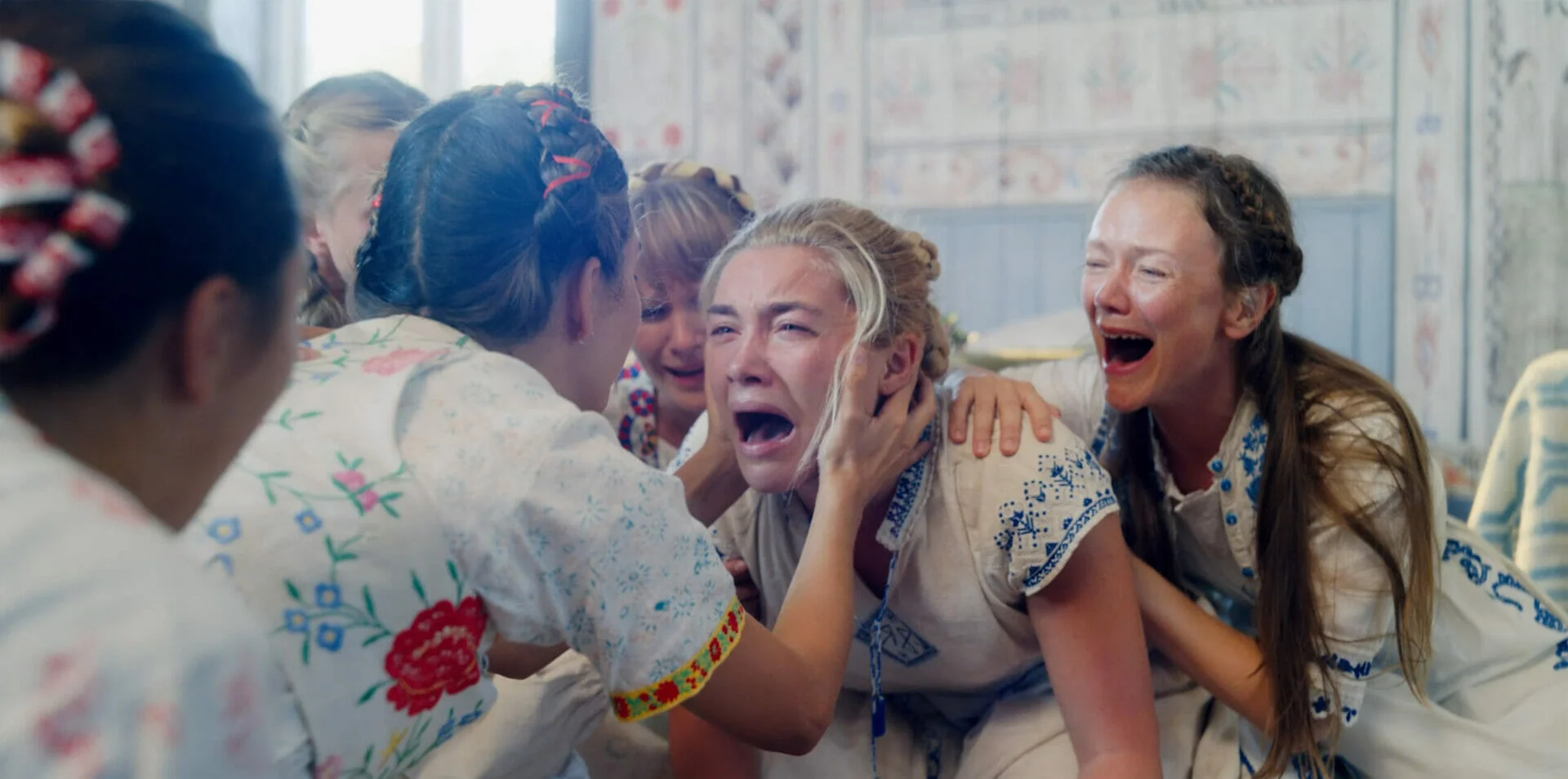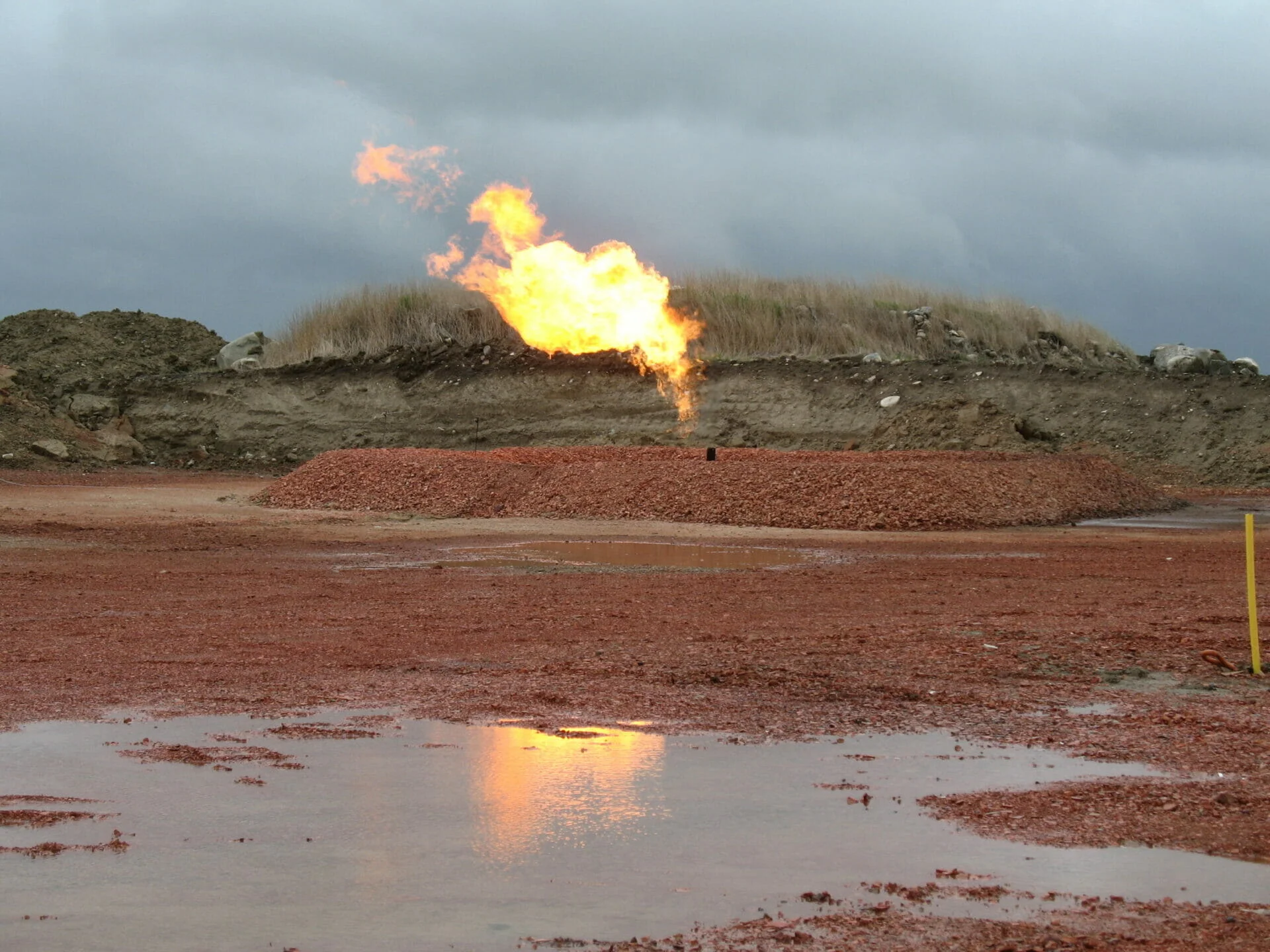
The Green Knight | An Epic Tale of Humans and Nature
Year
Runtime
Director
Writer
Cinematographer
Production Designer
Music by
Format
Genre
American filmmaker David Lowery is known for making movies that ask the viewer to give their own interpretation. His art house style of long, static shots is purposely intended for a small niche of viewers. Following his most praised works, A Ghost Story (2017) and The Old Man & the Gun (2018), Lowery wrote, directed, produced, and edited The Green Knight; his personal adaptation of the 14th-century chivalric romance Sir Gawain and the Green Knight. Scheduled to premiere at the 2020 South by Southwest film festival, this eerie epic medieval fantasy was not released until the summer of 2021 in both theaters and video on demand due to the COVID-19 pandemic.
The Green Knight has been successful in its critical reception, standing out far above any other Arthurian tradition-based production in recent decades. With its original take on the fantasy genre; a ruthless realism in its visuals; and an impactful insight into themes such as the Christmas festivities and climate change, the movie gains a voice of its own.
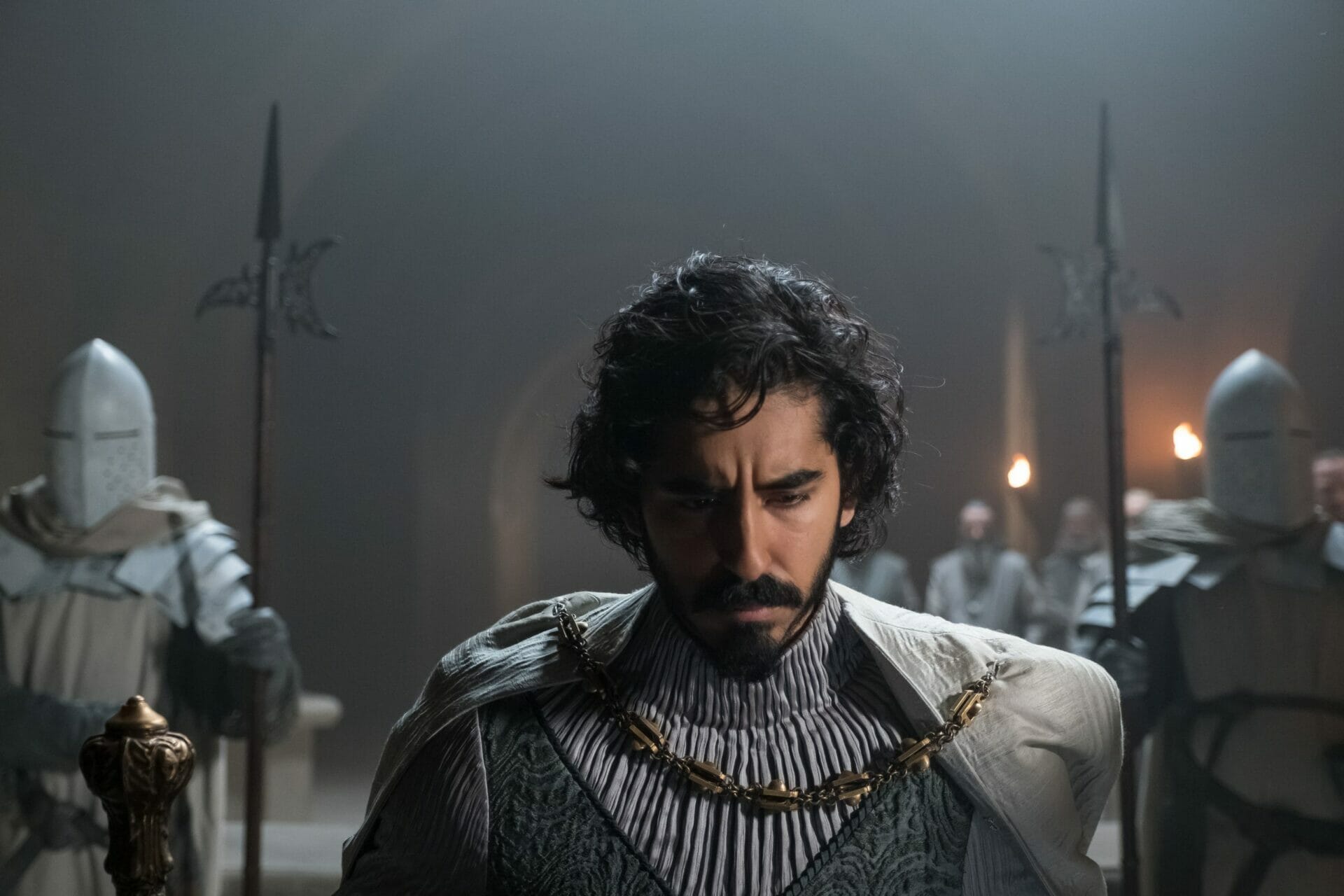
The journey to know ourselves
Magical lore says whoever can land a blow on the mysterious dream figure of the Green Knight (Ralph Ineson) will win his Green Axe. But for the game to be complete, the person who lands the blow will also have to show up at the Green Chapel, a year hence, to receive the same blow in return. It is Gawain (Dev Patel), nephew of King Arthur (Sean Harris), who accepts the challenge on Christmas Day.
He picks up the sword Excalibur, and, stepping amid the Round Table of Camelot, beheads the Green Knight. The mysterious figure then rises, picks up his severed head, and reminds Gawain of his rendezvous in a year’s time. Gawain then spends the next year as a hero, drinking, feasting, and enjoying the company of his girlfriend Essel (Alicia Vikander). But as Christmas day approaches, the boy is reminded of his deal with the Green Knight, and the debt he must repay.
He leaves alone, with nothing but the Green Knight’s axe and a girdle made by his mother (Sarita Choudhury) that will protect him as long as he wears it. The journey in search of the Chapel represents the core of the movie; a sequence of episodes – whether faithfully reproduced from the original poem or just inspired by a single line of it and then fed with the director’s own suggestions – that reveal Gawain as a weak, small being in a world of barbarians, magic, giants and forceful nature. Throughout the adventure, indeed, a scavenger (Barry Keoghan) and other characters fool and mock Gawain. Because of this, Gawain’s determination, at first as strong as it is blind, slowly dissolves into submission to a fantastic, mysterious world, that is too big for men to know.
A world of beauty and fear
Cinematographer Andrew Droz Palermo portrays this epic journey. He captures the sheer beauty of the Irish landscapes and paints them in vibrant colors while infusing the interiors with dim, contrasting lighting reminiscent of Rembrandt‘s paintings.
It all works in perfect synergy with the unsettling score by composer Daniel Hart, who had already worked on Lowery’s previous movies. The eeriness of the soundtrack is comparable to the likes of Ari Aster‘s Hereditary (2018) or Jonathan Glazer‘s Under the Skin (2013), but with a more medieval sound, through which it reaches a seemingly epic level, and a more historical atmosphere.
A duty towards nature
The natural environment plays a vital role in Sir Gawain’s tale. The Green Knight himself, in the shape of an anthropomorphic tree, embodies the metaphor for nature; Gawain will receive as much damage as he decides to inflict, paying the consequences of his boldness and lack of foresight. But nature also takes the shape of a talking fox, which Gawain meets during his pilgrimage as a helper in his task to redeem himself. Unlike the one from Antoine de Saint-Exupéry‘s The Little Prince, though, Gawain’s fox leads him to his voluntary execution, also acting toward the same justice as the Green Knight.
The use of a 14th-century tale to address the issue of climate change emphasizes how the problem, from Lowery’s point of view, is and has always been about humankind’s own arrogance. It doesn’t matter if there is no pollution or nuclear power plants; men cut down the woods around Camelot, which became a corpse-filled battlefield, and chivalry alone may have been the cause for that, as it is for Gawain’s foolish act.
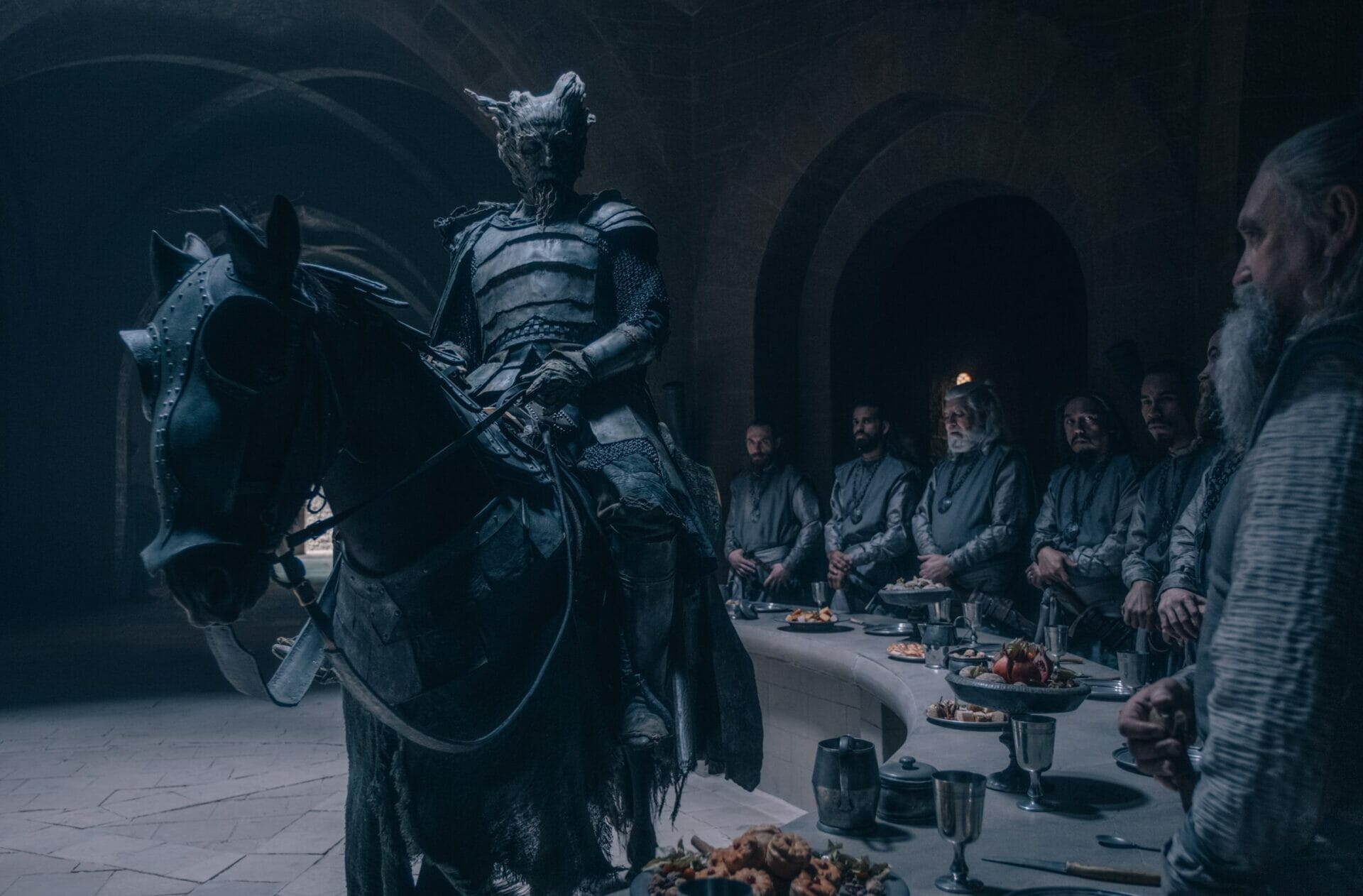
When asked about the theme of climate change in the story, Lowery said in an interview with IndieWire:
If you go back and read a lot of the analyses of the original poem, the first interpretation of the Green Knight himself is that the color green represents nature in a pagan sense: the confrontation between nature and civilization, or nature and religion. As someone who has a very ecological mindset and wants to bring those into my work, I felt that I should lean into that interpretation as hard as I could.
David Lowery in an interview with IndieWire
The ecological issue in cinematic fables
More than two decades ago, Hayao Miyazaki‘s Princess Mononoke (1997) took a similar approach to the problem, depicting a war between humans and the Gods of Nature in a struggle to find balance. Miyazaki’s animated movie also personifies nature in inhuman characters: divine beasts that, like the Green Knight, challenge humans and their civilization that threatens the natural environment. Christopher Nolan‘s Interstellar (2014) shows, in more recent years, another take on the subject. The cosmic odyssey displays a world where it is already too late to save our planet, and the only remaining possibility hides far beyond the stars.
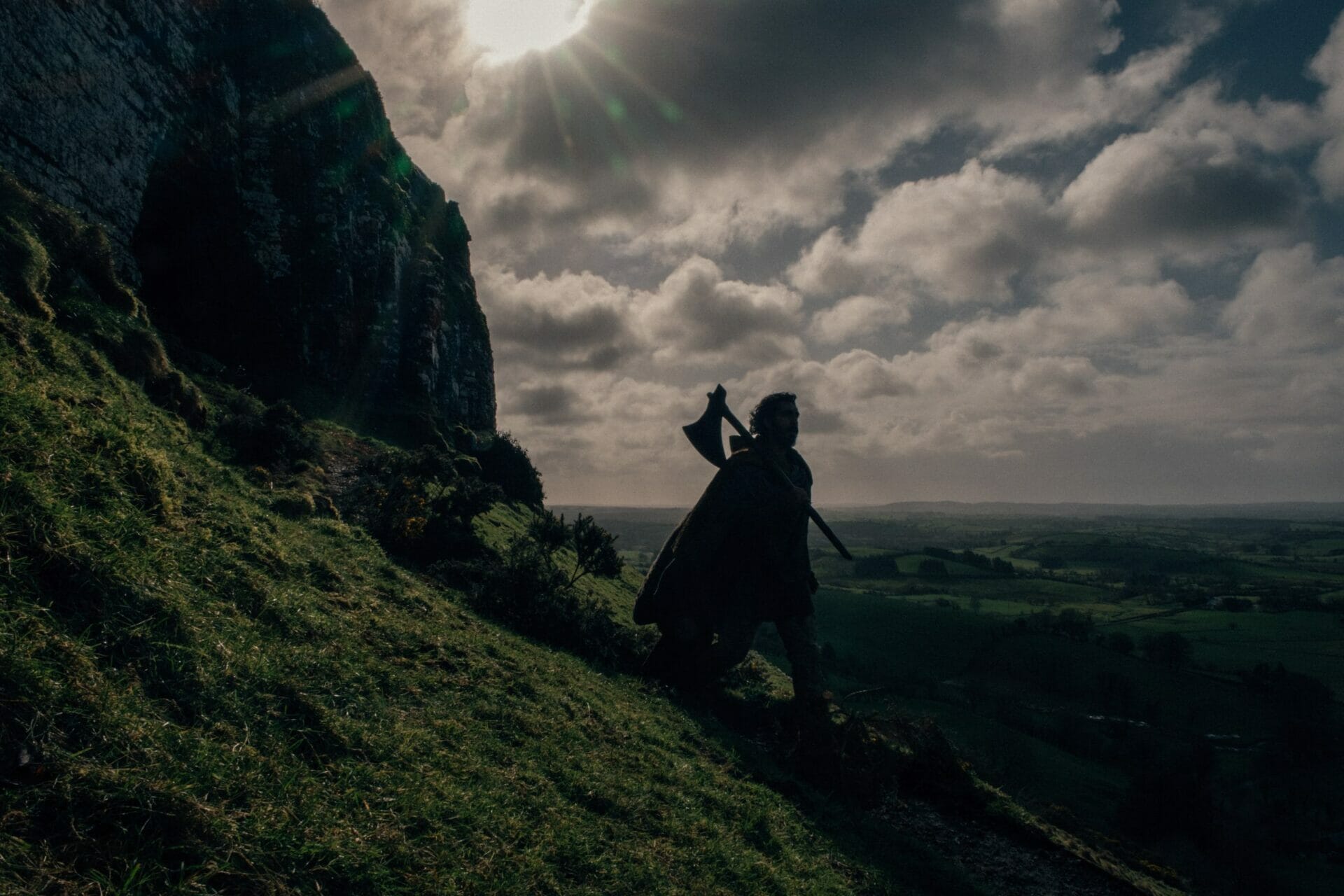
The unexpected Christmas tale
As Lowery said in an interview with Letterboxd, he put a lot of effort into evoking the typical Christmas aesthetic, complete with red and green decorations and a festive mood, in a medieval fantasy setting. It may not strike all viewers at first glance, but The Green Knight is by all means intended to be a Christmas movie. Although maybe not in the way we usually think of it. After all, many consider Die Hard (1988) to be one.
The Green Knight shows up at the Round Table carrying a branch of holly as Arthur’s family and loyal knights gather to celebrate. This may have a strange effect on the viewer, who does not usually associate Christmas celebrations with a dark, negative tale of pride and fear. But perhaps, as mentioned above, the Green Knight’s challenge is an offering to reunite Humans and Nature; a holy deed that Sir Gawain misunderstands and, instead of playing a festive game, he beheads the knight, thus forcing Nature to redeem its debt.
Tag
Buy a ☕ for Hypercritic




